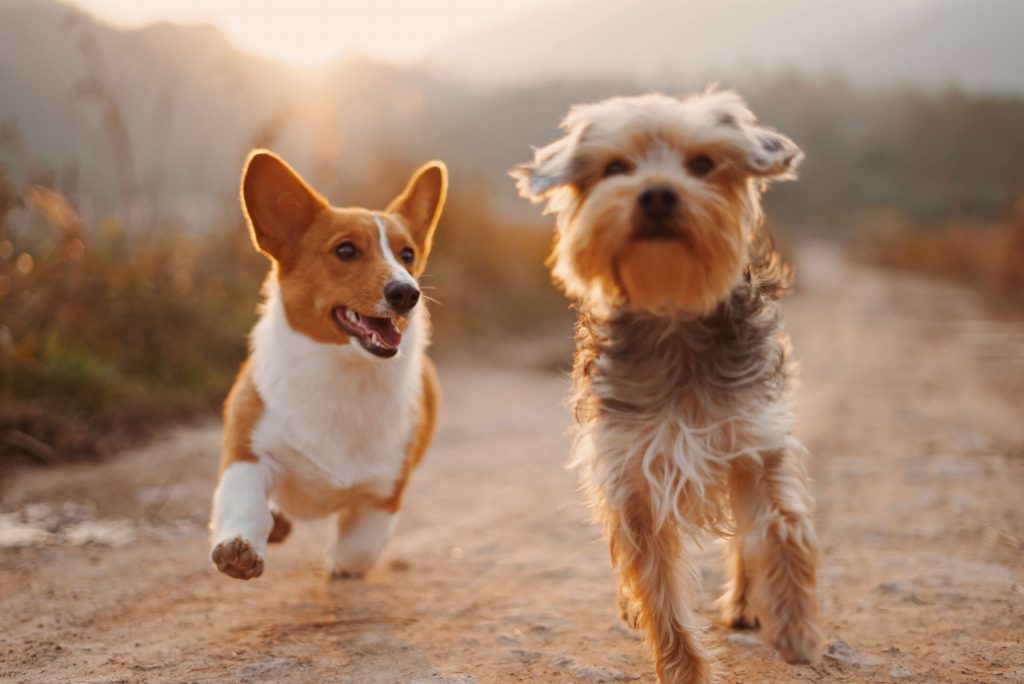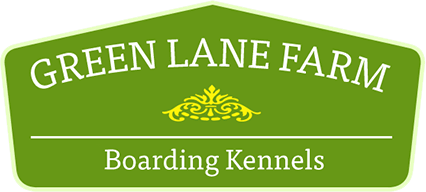Understanding Dogs’ Body Language
Posted on 13th April 2022 by Green Lane Farm Team
‘If only he/she could talk’ has been the cry of many a worried pet owner down the years, as they try to understand their animal’s latest bout of unusual behaviour, slightly different way of looking at them or seemingly depressed mood.
Of course, dogs don’t feel things in any way like we do – their needs are relatively straightforward and their means of expressing them are mostly quite easy to read. Nevertheless, they still feel a range of emotions and possess only limited means to express them to us, so that some behaviours can indicate different things, and you might need to put together a number of signs to get to the truth.
This month, the team at Green Lane Farm is going to be taking a look at some of the things dogs do with various parts of their bodies to indicate different emotions, and how we can understand what it is they’re trying to tell us.

-
The tail
Definitely one of the easiest to read of all the body language that dogs demonstrate, we all know that a dog that’s wagging its tail is a happy dog, or at the very least an excited dog. Either way, it’s nearly always a positive indication that a dog is either happy at that precise moment, or that it knows that it’s going to be happy very soon, perhaps because it’s about to be fed, go for a walk or maybe have a ball thrown for it to chase.
Dogs also wag their tails when they’re being – or trying to be – dominant, but it should be easy to tell the difference; when they’re happy or excited, they’ll have a far more relaxed posture than a dog trying to be dominant, who’s likely to have raised fur and be staring directly at whoever it is they’re trying to dominate.
A dog putting its tail between its legs can also indicate different things, so again, you may need to piece together different clues to arrive at the right answer. Those could include: anxiety, when combined with a hunched posture and avoiding eye contact; aggression, when combined with flattened ears and bared teeth; and, conversely, submission, when they might also crouch low to the ground and try to seem small.
-
The ears
When dogs’ ears are relaxed, then usually so are they. If they’re pulled in towards the head, that will usually indicate that they might be anxious or unwell, while flattened ears (together with what looks like a worried expression) can be a sign of rising aggression.
-
The eyes
Understanding your dog’s eyes can be key to understanding their moods. Their look can be soft or hard, and if you’ve spent any time around dogs exhibiting both those looks, you’ll know how easy it is to tell the difference. When your dog sits and stares at you with a relaxed posture, they’re pretty much just saying that they love you. Of course, they can also sit and stare at you but be more alert or skittish, and perhaps occasionally barking, in which case they’re probably telling you it’s time for a walk, dinner or play. If they sit and stare at you while growling and baring their teeth, then you probably want to be somewhere else.
One more thing about dogs’ eyes: slow blinking can be another sign that they may be showing signs of stress and could turn aggressive if you approach.
-
The mouth, lips and tongue
A lot of the things that can go on around a dog’s mouth can look familiar and can have similar meanings – but not always. So, when dogs yawn it can mean they’re tired, but it can also mean that they’re stressed. Similarly, dogs often lick their lips after a good meal – it’s a good way of retrieving any tiny bits of food that didn’t make it all the way into the mouth, after all – but they also do it when they’re anxious.
Dogs also often look like they’re smiling at you; their mouth can be in that traditional curved-up position, and you can see their teeth. Sometimes they are sort of smiling, as long as they’re looking a bit soft and soppy as well. If their ‘smiling’ is accompanied by a low growl and an air of menace, however, don’t go any closer.
On the plus side, dogs licking you is an unmistakable sign of affection – if not an especially hygienic one!
We hope you’ve found this brief guide helpful – as we’ve tried to indicate throughout, you often need to piece together a number of different bits of a dog’s body language to get the full picture.
At Green Lane Farm Boarding Kennels, we’ve been looking after the animals and pets of people around Kingston and Chessington in Surrey for over 50 years. Over that time, we’ve learned a lot about how to read dogs’ body language, so although each dog of course has its own distinct characteristics, we’re experienced in understanding when one of our guests is feeling stressed or anxious. Usually, we can see that they’re generally happy and relaxed to be with us!
If you need experienced people to care for your best friend, you can’t do better than trust him or her to our care. Call us now to book a stay, or to arrange a visit so you can check our facilities for yourself before making a final decision.
